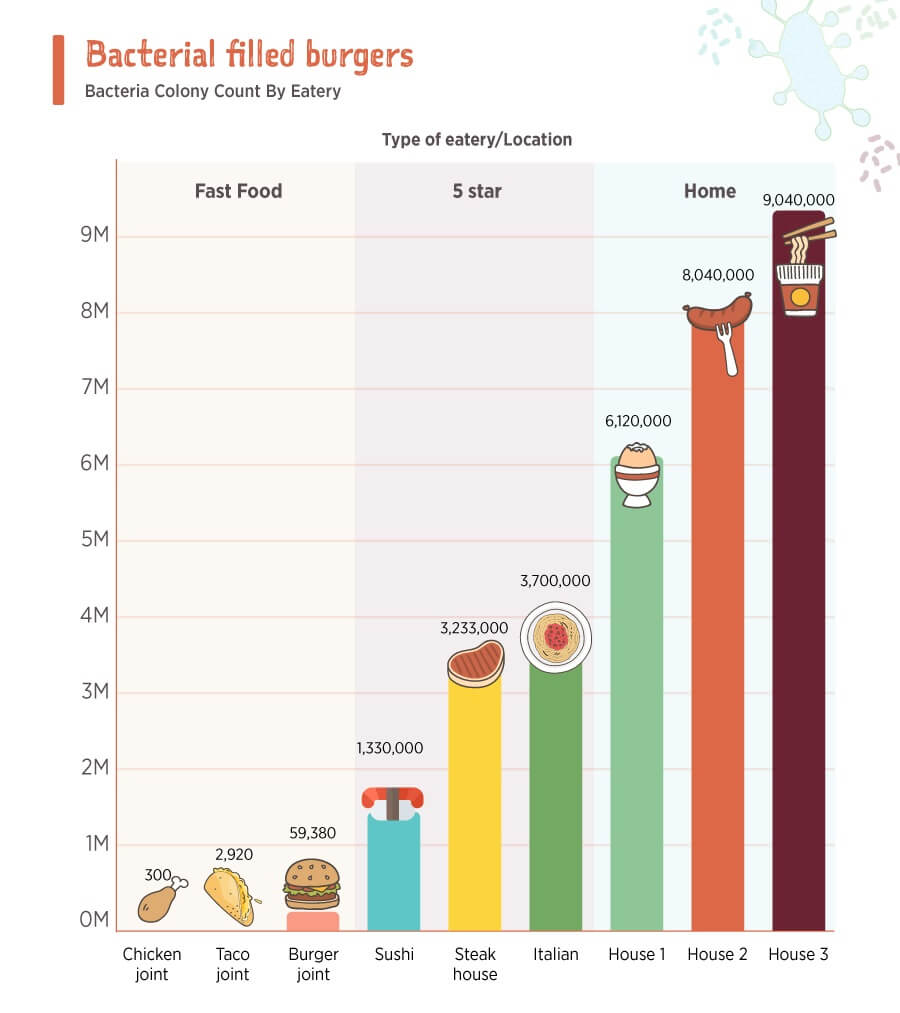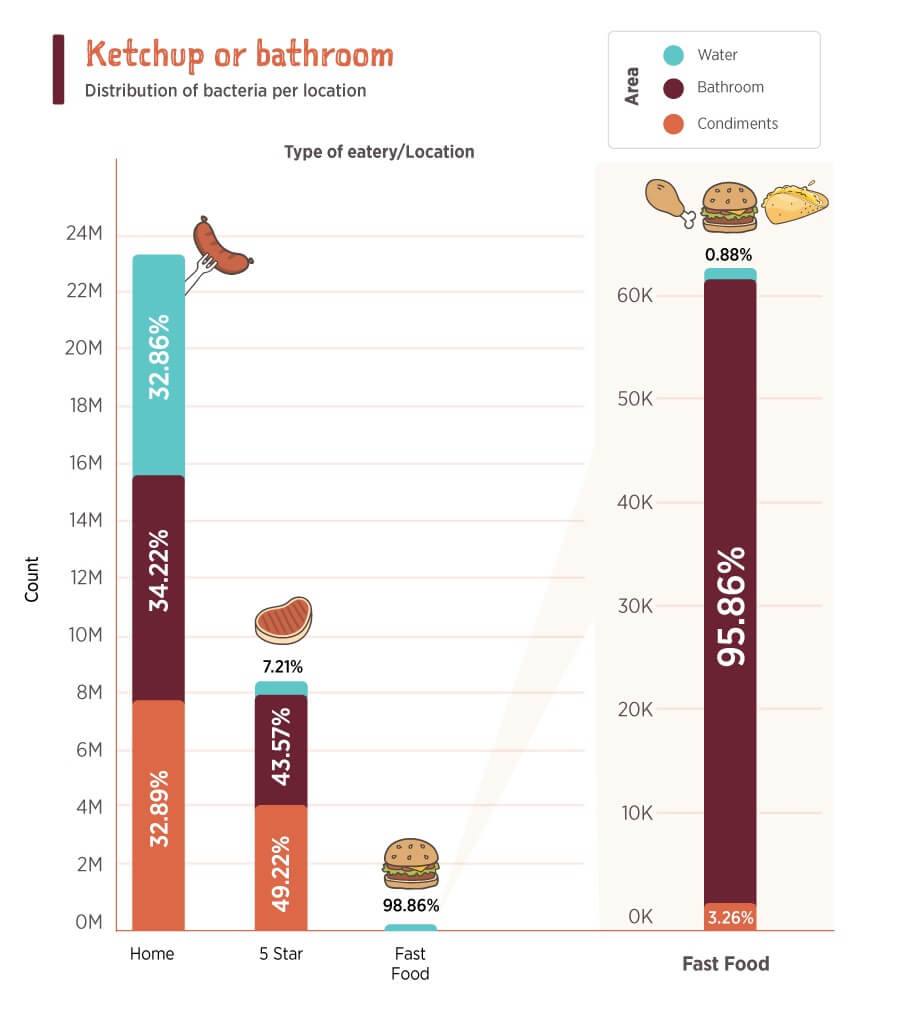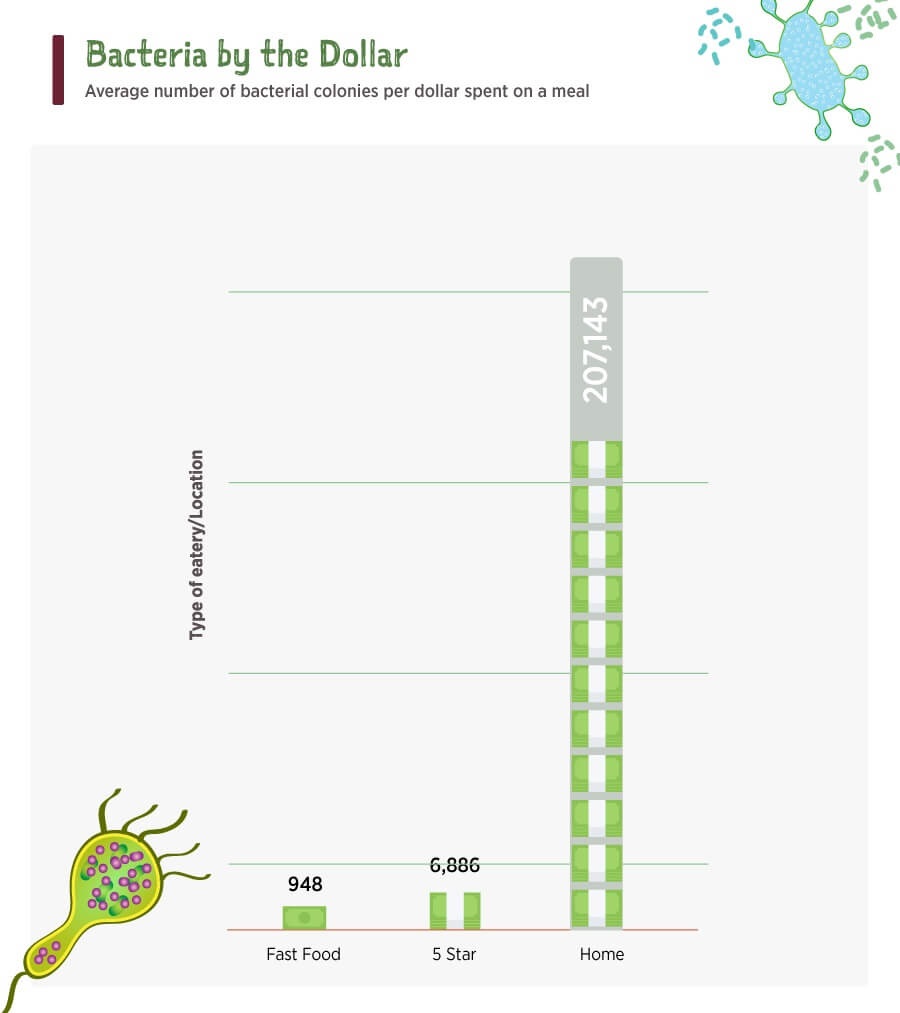When you think of the dirtiest places to eat, you're likely conjuring up images of greasy burger joints or that taco spot you pass on your way to work in the mornings, right? Maybe not. A new report from dinnerware supplier Restaurantware found that fine-dining chains host more bacteria and germs than their fast-food counterparts — as much as 132 time as much — but even that number pales in comparison to the numbers found at without a doubt the dirtiest place eat: at home.
Videos by Wide Open Country
The supplier took three samples (water source, bathroom and condiments) at nine locations — three fast-food joints (chicken, taco and burger); three fine-dining restaurants (a sushi restaurant, a steakhouse and an Italian restaurant) and three private homes. Their results are surprising... and pretty gross, especially if you've always considered home the safest, cleanest place to eat and stayed away from those fast-food restaurants, alleged den of bacteria and germs.
The study looked at bacterial colony count by eatery; the fast-food chicken, taco and burger joints revealed just 300, 2,920 and 59,380 colonies, respectively. Fine-dining restaurants, commonly thought of as cleaner than their inexpensive, on-the-go counterparts, revealed quite the opposite, with colonies numbering 1,330,000 (sushi), 3,223,000 (steakhouse) and 3,700,000 (Italian).
If that wasn't enough to kill your appetite for a bit, the number of bacterial colonies in private homes were much, much higher — 6,120,000, 8,404,000 and, at the highest end, 9,040,000. Why? Well, if you ever worked in fast-food, you'll know most restaurants stick to a rigid corporate sanitation standards, abide a regular daily (even hourly) cleanup schedule, and face regular government inspection.
Fine-dining restaurants have to play by the same rules and keep their establishments cleaner, but they also use dishes and utensils — rather than disposables, another reason fast-food joints stay cleaner.
And private homes? Well, there are no rules or inspections or daily cleanup schedules, so unless you (or your partner) is a clean-freak, most folks aren't deep-cleaning their bathrooms and kitchens nearly as often, or as well.
According to the results of the study, germs were pretty much evenly present near water sources, near food sources and in the bathrooms; in fine-dining restaurants, germs were found about evenly in the bathrooms and near the condiments; in fast-food restaurants, where only a tiny amount of bacteria was found, it was mostly present in the bathrooms.
The study also compared the samples taken in dollar amounts; that is, how much we spend on germs we eat each year. Since most people eat the majority of their meals at home, and home is the dirtiest place we eat. Each year, we consume — wait for it — 207,143 bacterial colonies per dollar spent at home annually, compared to just 948 fast-food chains and 6, 886 five-star restaurants.
With just six samples taken, this small sample size means this study should be taken with a grain of (hopefully germ-free) salt, but it's enough to make you think. And hopefully clean your house.







